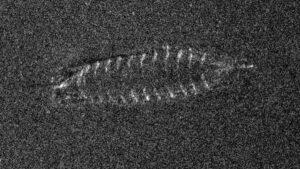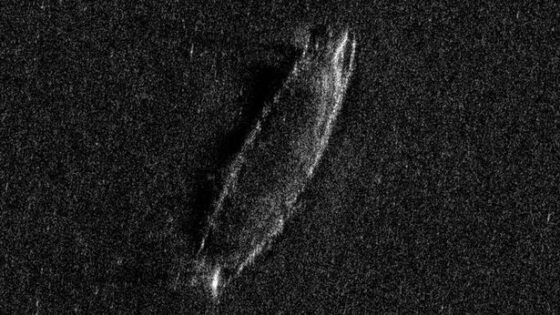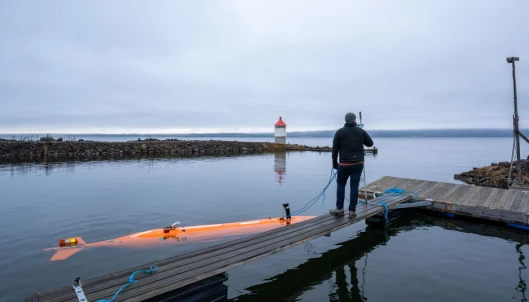
Medieval shipwreck discovered in Norway’s largest lake

Researchers surveying the bottom of Norway’s Lake Mjøsa have uncovered the remains of a historic shipwreck dating back to the 14th century.
Archaeologists working for the Norwegian Defence Research Establishment made the discovery while hunting for unexploded WWII ammunition, and say it could become one of the country’s oldest-ever shipwrecks.
Sonar images of the wreck site show the hull of the 10-metre-long wooden ship, which is lying on the lake bed at around 410m beneath the surface.

Speaking to Live Science, maritime archaeologist Øyvind Ødegård says the ship’s construction reveals it was likely built around 700 years ago, at the time that Viking ships began to transition to medieval designs with a distinctive bow and stern.
“We only have the acoustic [sonar] images of the wreck,” says Ødegård. “But it appears from the data that there is the outline of something that possibly could be a stern — and if that’s the case, then that doesn’t really appear until the 1300s.”
From the design of the vessel, researchers have concluded it likely had a square sail, comparable to those used by Viking ships.
The researchers say that the ship’s frame show it was a “clinker-built” ship, referring to a traditional Norse boatbuilding method that overlapped the planks of the hull to reduce overall weight.

The autonomous underwater vehicle Hugin is being used to map the bottom of Lake Mjøsa. Photo courtesy of Merete Nyheim/NTNU
Ødegård adds that bad weather has hampered the researchers from investigating the wreck site with camera equipment so far. Further investigations with an autonomous underwater vehicle called Hugin won’t be possible until conditions improve next year.
Ødegård is part of a project led by the Norwegian Defence Research Establishment (FFI) in collaboration with Norwegian University of Science and Technology (NTNU) that is mapping hundreds of tons of ammunition dumped in Lake Mjøsa from the 1940s until the 1970s. He admits that the prospect of finding new cultural treasures was one reason he joined the project.
“Finding the wreck was almost a byproduct of the original mission to map dumped munitions,” he says. “I expected to find some things — that’s why I was participating in the project.”

Hamar, a town on the shores Lake Mjøsa
Mjøsa was part of an important trade route that ran between several affluent communities between the eighth and 11th centuries. This means there could well be more artefacts to discover in 2023 and beyond.
It’s not the only ancient shipwreck to be discovered in recent months. In November, researchers in Croatia found a Roman boat in the ocean off Sukošan, which is estimated to date from the 1st century. In October MIN reported that an unusual ‘whaleback’ steamship had been discovered Lake Superior, after being lost for 120 years.
